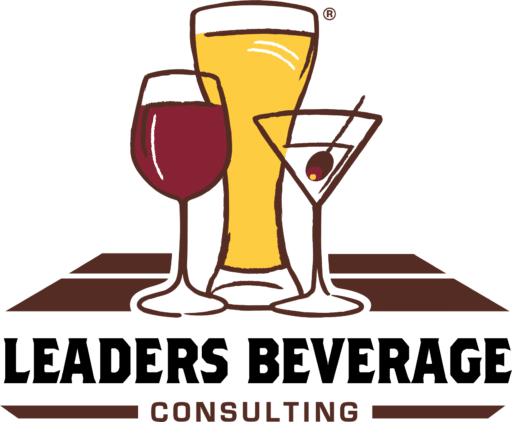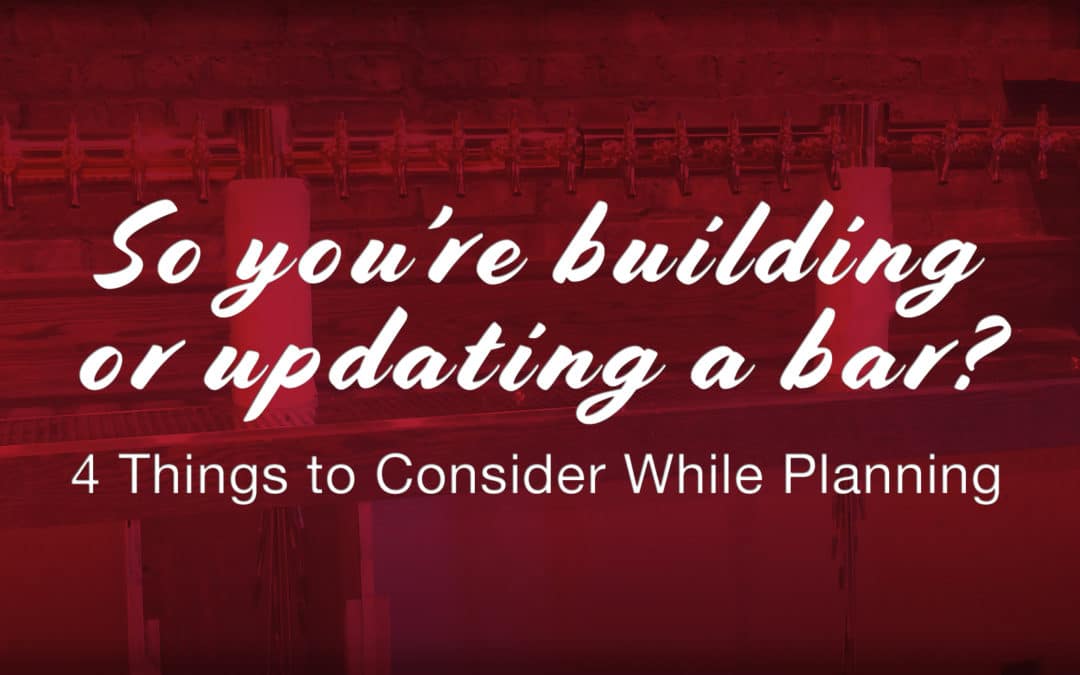When building a new bar or restaurant, I’m always surprised how often draft beer systems are an afterthought. Draft beverages (including draft beer, draft wine, draft cocktails, and more) are among the highest profit margin items in any venue. Even in a white tablecloth restaurant where the entrée is $50, the $7 draft beer has more profitable margins.
So why, then, is draft often the last thought? Likely it’s forgotten until the end of a build-out because the systems are generally out of sight and out of mind. But a well-designed system will benefit your bottom line in two major ways:
- delivering beverages to the glass with minimal product waste
- considering long-term system maintenance
Here I want to highlight the importance of involving your draft team as early as possible when planning a new bar or restaurant, as well as provide some useful considerations for the planning process.
It’s Never Too Early to Involve Your Draft Team
First let me say it’s never too early to involve your draft installation team in the process. The most successful projects at Leaders Beverage begin before the project design phase is complete.
For example, we had an owner call us to look at his space and provide an estimate based on the existing design layout. The plans had the beer cooler in the back of the restaurant, 100ft away from the bar. Because the floors weren’t being redone, there was no way to send the beer trunk underground in a chase. Therefore, we’d have to run draft lines up and over the entire restaurant, and then come down from the ceiling in an upside-down tower.
This plan would have looked phenomenal, but the cost would land around $50,000. We showed him how moving the cooler and rearranging layout could allow for a direct-draw system and only cost $18,000 to install.
Considering Line Length
But that wasn’t the only savings in this example. In the world of draft beer, proper maintenance requires cleaning (and emptying) draft lines every two weeks. In this particular system—using 100ft of trunk for 48 lines at a standard 5/16” diameter (which holds .5oz of beer per foot)—that equals 2400 ounces of beer dumped every two weeks.
If you are selling 14oz pints at $6 apiece, that’s just over $1000 lost every clean, with 26 bi-weekly cleans in a year. $26,000 a year is a lot of revenue to lose on annual maintenance. By moving the cooler next to the bar and creating a direct-draw system, we reduced the lost beer per clean to only 100 ounces!
For this customer, our involvement during the design phase reduced the cost of construction by $32,000 and avoided $26,000 in annual maintenance costs.
Trunk Line Diameter
Another design consideration, beyond distance of cooler to faucets (trunk length), is the inner diameter of trunk line used. 3/8”ID (interior diameter) line carries .75oz per foot, whereas 5/16” and ¼” carry .5oz and .33oz respectively. Thus, the smaller diameter trunk line used, the less product gets lost when emptying lines for cleaning or between kegs.
So why not always use ¼”ID line? Unfortunately, narrower lines increase resistance pressure compared to wider ones, and a system can only accommodate so much resistance. Again, this is why design variables are so important to consider in the beginning. Are there ways to reduce the length of the beer trunk run? Or can we use pumps to help overcome higher resistance numbers?
Other Important Considerations
You can see how important even a few design features can be to your bottom line for the long-haul life of your bar or restaurant. Other considerations include whether you really need FOBs (Foam on Beer Detectors), and whether you’ll pour only beer on the lines or include other products, as well. Both variables affect what kind of gasses and gas blends you need. Another huge consideration is the chase that will run your beer trunk from the cooler to the bar. Chases have very specific constraints, and we’ve seen many that are either impossible to work with or so unnecessarily complex that they bloated labor rates.
Each of these topics can become its own full conversation, so look out for future blog posts discussing each consideration. Meanwhile, here is a list of questions to start asking in preparation to meet with your draft installation company:
Timeline
When do you want to be open? Remember, your draft team needs time to complete work before inspections, which are necessary before opening with enough time to do proper staff training and soft openings.
Long-Draw vs Direct-Draw
A long-draw system requires some sort of cooling system, such as glycol, to keep the beer cold from keg to faucet. Direct-draw systems include kegerators or through-the-wall cooler faucets and shanks.
Cooler Location
Sometimes you just don’t have an option where the cooler goes. But if you do, your draft company can help with placement decisions. Are there any special notes about the cooler or location, such as the cooler being in a shared basement?
Trunk Length
This is essentially how far your cooler is from the bar and has a significant impact on product waste when cleaning lines or changing kegs.
Glycol Power Pack
Your installers will ultimately determine the kind of pack used, but you need to plan where it is going and know that it may need special electrics.
Gas Blender
What kind of beverages will you have on tap (nitro beers, cocktails, wines)? Your installers need to know so they can plan the proper gas blender. A blender mixes Nitrogen (N2) and Carbon Dioxide (CO2) to push and carbonate products properly.
CO2 & N2 Source
Are you going to use gas cylinders or have bulk CO2 and N2 generators? Your draft installers can help with these decisions.
Towers & Faucets
What kind of aesthetic are you looking for? Do you need flow control faucets because of carbonation differences in your beverage line-up?
Glass Rinsers
Glass rinsers can help beer pour without excessive foam by pre-conditioning the glass. Many craft beer consumers consider this step a necessity. Still, you may or may not want them.
FOBs
Foam on Beer Detectors turn off the flow of beer when a keg is empty, keeping the beer line packed with beer. These are a good idea on long runs and when you pour the same beer over and over. You may not want them if you change products every single keg.
Beer Pumps
Split lines or very long runs may make these necessary.
Product Mix
What kind of beers will you be pouring? Do you want wine, cocktails, or coffee on draft, as well? Your product mix can change how we run gas and build cooler panels.


Thank you Drew!
If everyone in the restaurant- bar business we’re as honest,helpful and educational as you, the restaurant business will be a fantastic world.
In this article I learned everything about beer toppers!
From “ The Michael Jordan of beer tappers “. Aka Drew Larson.
Thank you!
Hi José,
Thank you so much for the kind words. I can’t jump as high as Michael Jordan but I’d be happy to bring Michael on the job to teach him draft beer any time. I’m guessing he won’t take me up on that offer so we’ll just keep at it ourselves.
Thank you so much and Cheers!